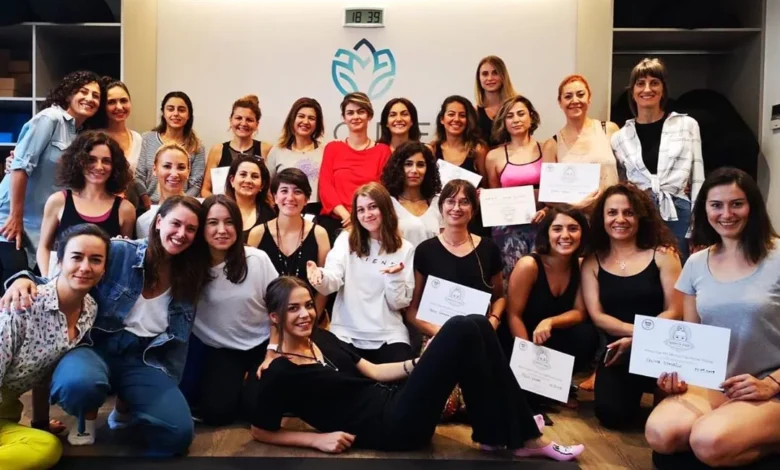Nova Scola: Transforming Education with Innovatio

Education is the backbone of progress, yet for centuries, it’s been bound by traditional methods chalkboards, rigid curriculums, and one-size-fits-all approaches. Enter Nova Scola, a term that’s sparking curiosity and excitement in the education world. Translating to “new school” in Latin, Nova Scola represents a bold shift toward innovative, student-centered learning. It’s not just a phrase; it’s a movement that’s redefining how we teach and learn in the 21st century. In this article, we’ll dive into what Nova Scola means, its roots, its impact, and why it’s capturing the attention of educators, students, and parents alike.
Table of contents
The Origins of Nova Scola
The term Nova Scola might sound like a trendy buzzword, but its roots are deeply intellectual. Derived from Latin, it evokes the idea of a fresh approach to education—a departure from the old ways. While there’s no single institution or organization branded as “Nova Scola,” the term has been adopted by forward-thinking educators and institutions to describe a philosophy: education that adapts to the needs of modern learners. It’s about breaking free from outdated systems and embracing flexibility, creativity, and technology.
This concept emerged as a response to the limitations of traditional education. For decades, schools have followed a factory-model approach—students move through grades like products on an assembly line, learning at a standardized pace. But today’s world demands more. With rapid technological advancements and a globalized economy, students need skills like critical thinking, adaptability, and digital literacy. Nova Scola embodies this shift, advocating for learning environments that are dynamic and responsive to individual needs.
The movement draws inspiration from progressive educational theories, like those of John Dewey, who emphasized learning through experience, and Maria Montessori, who championed self-directed learning. But Nova Scola takes these ideas further, integrating cutting-edge technology and data-driven insights to personalize education like never before. It’s not about throwing out the old; it’s about building something new and better.
Why Nova Scola Matters
The traditional education system has served us well in many ways, but it’s showing its age. Standardized tests, rote memorization, and rigid schedules often fail to prepare students for a world where creativity and problem-solving are paramount. Nova Scola steps in to bridge this gap, offering a vision of education that’s as dynamic as the world we live in.
One of the core tenets of Nova Scola is personalization. Every student learns differently—some thrive in group settings, while others excel when given space to explore independently. Traditional classrooms often struggle to accommodate these differences, but Nova Scola leverages technology to tailor learning experiences. Imagine a classroom where a student struggling with algebra gets real-time feedback from an adaptive learning platform, while another student dives deeper into advanced calculus because they’re ready for the challenge. This isn’t science fiction; it’s the reality Nova Scola is pushing for.
Beyond personalization, Nova Scola emphasizes skills over facts. In a world where information is a Google search away, memorizing dates or formulas is less critical than knowing how to analyze, collaborate, and innovate. By focusing on competencies like critical thinking, communication, and digital fluency, Nova Scola prepares students for careers that may not even exist yet. It’s education with an eye on the future, not the past.
The Role of Technology in Nova Scola
Technology is the heartbeat of the Nova Scola movement. From artificial intelligence to virtual reality, modern tools are transforming how students learn and teachers teach. Adaptive learning platforms, for instance, use algorithms to adjust lessons based on a student’s progress, ensuring they’re always challenged but never overwhelmed. These platforms analyze data to identify strengths and weaknesses, offering insights that help teachers provide targeted support.
Virtual and augmented reality are also making waves. Imagine a history class where students don’t just read about ancient Rome but walk through a virtual Colosseum, exploring its architecture and culture firsthand. Or a biology lesson where students dissect a digital frog, no scalpel required. These immersive experiences make learning engaging and memorable, turning abstract concepts into tangible realities.
But technology isn’t just about flashy tools. It’s also about accessibility. Online platforms allow students in remote or underserved areas to access high-quality education. Whether it’s a rural student joining a virtual classroom or a teacher using cloud-based tools to collaborate with colleagues worldwide, Nova Scola breaks down geographical barriers, making education more inclusive.
Teachers as Facilitators, Not Lecturers
In the Nova Scola model, the role of the teacher evolves dramatically. Gone are the days of the sage on the stage, delivering lectures to rows of passive students. Instead, teachers become facilitators—guides who empower students to take charge of their learning. This shift requires a new kind of educator: one who’s tech-savvy, adaptable, and skilled at fostering collaboration.
Professional development is a cornerstone of Nova Scola. Teachers need training to navigate new technologies and pedagogies effectively. Schools embracing this model invest in ongoing learning for educators, ensuring they’re equipped to create dynamic, student-centered classrooms. It’s a big change, but it’s one that empowers teachers to make a deeper impact.
This approach also fosters a sense of partnership between teachers and students. By encouraging students to explore their interests and take ownership of their learning, teachers build stronger relationships and create environments where curiosity thrives. It’s less about enforcing rules and more about inspiring discovery.
Challenges of Implementing Nova Scola
No revolution comes without challenges, and Nova Scola is no exception. One of the biggest hurdles is access to resources. Not every school has the budget for cutting-edge technology or extensive teacher training. Rural and low-income districts, in particular, may struggle to adopt these innovations, risking a widening gap between haves and have-nots.
Another challenge is resistance to change. Education is steeped in tradition, and many stakeholders—parents, administrators, even teachers—may be skeptical of new approaches. Convincing them that Nova Scola isn’t just a fad but a necessary evolution requires clear communication and tangible results. Pilot programs and case studies can help, but change takes time.
There’s also the question of balance. While technology is a powerful tool, over-reliance can lead to issues like screen fatigue or reduced face-to-face interaction. Nova Scola advocates emphasize the importance of blending digital and human elements—using technology to enhance, not replace, meaningful connections.
Overcoming the Obstacles
Addressing these challenges requires creativity and collaboration. Public-private partnerships can help fund technology and training, ensuring equitable access. For example, tech companies could sponsor programs to bring adaptive learning platforms to underserved schools, while governments could offer grants for teacher development.
To combat resistance, schools can start small, piloting Nova Scola principles in a single classroom or subject area. Success stories—like improved student engagement or higher test scores—can build momentum and convince skeptics. Sharing these stories through community forums or social media can also garner support.
Balancing technology and human interaction is trickier but achievable. Schools can set guidelines for screen time, ensuring students have opportunities for hands-on activities and group collaboration. The goal is to use technology as a tool, not a crutch, preserving the human connections that make education meaningful.
Key Principles of Nova Scola in Practice
The Nova Scola movement isn’t just a theoretical framework—it’s a practical approach that schools and educators can implement to transform learning. While the philosophy is flexible, certain core principles guide its application, ensuring that students and teachers alike benefit from its innovative approach. These principles distill the essence of Nova Scola into actionable steps that can be adapted across diverse educational settings.
- Student-Centered Learning: At the heart of Nova Scola is the belief that education should revolve around the student. This means designing lessons that cater to individual learning styles, interests, and paces, whether through personalized assignments or choice-driven projects that spark curiosity.
- Integration of Technology: Technology is a cornerstone, enabling everything from adaptive learning platforms to virtual simulations. It’s about using tools to make learning interactive and accessible, like apps that adjust math problems based on a student’s progress or VR experiences that bring history to life.
- Focus on Future-Ready Skills: Nova Scola prioritizes skills like problem-solving, collaboration, and digital literacy over rote memorization. Students might work on group projects to design sustainable solutions or learn coding to prepare for tech-driven careers.
- Teacher Empowerment: Teachers are seen as facilitators who guide rather than dictate. Professional development programs equip them with the skills to use new technologies and foster environments where students feel safe to explore and experiment.
- Inclusivity and Accessibility: Nova Scola strives to make education equitable, using online platforms to reach students in remote areas or providing resources for diverse learners, ensuring no one is left behind in the shift to modern learning.
The Global Impact of Nova Scola
The Nova Scola movement isn’t confined to one country or region—it’s a global phenomenon. In Finland, known for its progressive education system, schools are experimenting with flexible curriculums and student-led projects, aligning with Nova Scola principles. In Singapore, technology-driven learning is preparing students for a tech-centric economy. Even in developing nations, where resources are limited, mobile learning platforms are bringing education to remote areas, embodying the spirit of Nova Scola.
This global reach highlights the universal appeal of the movement. Education is a shared challenge, and Nova Scola offers a framework that can be adapted to different cultures and contexts. Whether it’s a high-tech classroom in Silicon Valley or a mobile learning app in rural Africa, the core idea—empowering students through innovation—resonates worldwide.
Nova Scola in Action: Real-World Examples
To see Nova Scola in action, look at schools like High Tech High in California. This network of charter schools emphasizes project-based learning, where students tackle real-world problems, from designing sustainable buildings to creating documentaries. Technology is woven into the curriculum, with students using tools like 3D printers and coding platforms to bring their ideas to life.
Another example is the Khan Academy, which offers free, personalized learning resources to millions worldwide. Its adaptive platform adjusts to each student’s pace, embodying Nova Scola’s focus on individualized education. These examples show how the movement’s principles can be applied at scale, transforming lives one learner at a time.
Conclusion
Nova Scola is more than a buzzword—it’s a vision for the future of education. By embracing personalization, technology, and forward-thinking pedagogy, it’s redefining what it means to learn and teach. While challenges like access and resistance remain, the movement’s potential to empower students and prepare them for a rapidly changing world is undeniable. As more schools adopt these principles, we’re moving closer to an education system that’s as dynamic, diverse, and innovative as the students it serves. The new school is here, and it’s ready to shape the future.
FAQs
What exactly does Nova Scola mean?
Nova Scola is a Latin term meaning “new school.” It refers to a modern approach to education that emphasizes innovation, personalization, and technology to create student-centered learning environments. Think of it as a philosophy that challenges traditional methods to better prepare students for today’s world.
How is Nova Scola different from traditional education?
Traditional education often follows a one-size-fits-all model with standardized curriculums and testing. Nova Scola focuses on tailoring education to individual needs, using technology like adaptive learning platforms and emphasizing skills like critical thinking over rote memorization.
Can Nova Scola work in underfunded schools?
It’s challenging but possible. While technology can be expensive, partnerships with tech companies or government grants can help. Starting small with pilot programs or using affordable tools like mobile learning apps can make Nova Scola principles accessible even in resource-scarce areas.
Is technology the only focus of Nova Scola?
No, technology is a tool, not the whole story. Nova Scola also emphasizes human elements like teacher-student relationships and hands-on learning. It’s about using tech to enhance education, not replace the personal connections that make learning meaningful.
How can parents support Nova Scola at home?
Parents can encourage curiosity by supporting self-directed learning, like exploring online resources or engaging in real-world projects. Staying open to new teaching methods and communicating with teachers about tech-based tools can also help align home and school efforts.
What’s the biggest challenge for Nova Scola’s adoption?
Resistance to change is a major hurdle. Many people are comfortable with traditional education and may be skeptical of new approaches. Schools can overcome this by sharing success stories and starting with small, measurable changes to build trust.





